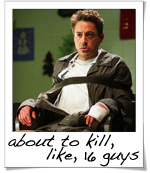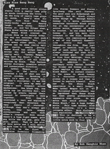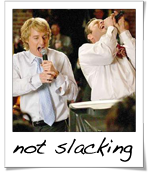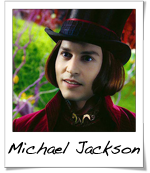A review of Kiss Kiss Bang Bang. (It’s badass.)
 A good movie review always starts with a really lame play on words involving the title. I am the king of really lame plays on words. Here’s mine for today: Kiss Kiss Bang Bang kicks-kicks ass-ass. Hearty laugh. Move along. Robert Downey Jr. and Val Kilmer star, Shane Black writes and directs.
A good movie review always starts with a really lame play on words involving the title. I am the king of really lame plays on words. Here’s mine for today: Kiss Kiss Bang Bang kicks-kicks ass-ass. Hearty laugh. Move along. Robert Downey Jr. and Val Kilmer star, Shane Black writes and directs.
Shane Black created the action film as it exists today. You may not consider that much of an achievement, but, just like every other genre, action movies can be done really well and really, really poorly. Shane Black has always been a writer who did action movies really well. Lethal Weapon, The Last Boy Scout, The Long Kiss Goodnight are all films written by Black. They feature clever dialogue, creative action and inconsistent direction.
Lethal Weapon, if you recall, is the movie that invented a lot of what are now action clichés. Watching it again it’s easy to forget that it wasn’t unoriginal, it was THE original. It sets up many of today’s most frequent action mechanisms: One black cop, one white cop, (an unlikely duo) are forced by events beyond their control to investigate a case together. Soon they’ve uncovered a vast and explosive conspiracy that threatens the very fabric of… whatever. Although they don’t always get along, they have snappy conversations and earn each other’s respect. Soon enough there’s a huge fight scene, good guy kills the bad guy, gets the girl, gravy.
I’ll be the first to criticize formulaic filmmaking like Steven Sommers and Steven Spielberg (The evil Stevens. The good ones are Soderbergh and McQueen), but Mr. Black always mixes things up. Through Robert Downey Jr.’s movie conscious narration, Black pokes fun at the conventions of the action movie, several of which he created. In one scene Robert Downey Jr. and his main love interest in the film, Michelle Monaghan, are reminiscing about a set of old Dashiell Hammett-like novels that recur throughout the film. They just happen to mention that at the end of each novel the hero is always tortured and then kills like sixteen guys. Of course as Kiss Kiss develops, this is exactly what Downey Jr. is forced to do.
In addition to the customary witty banter between Val Kilmer and Downey Jr, Mr. Black employs a new dimension-Black Humor. An instant classic is the scene in which Downey Jr’s character accidentally pisses on a corpse and then is forced to explain himself. Also new to the Shane Black experience is a small budget. When Lethal Weapon hit in ’87 the Hollywood establishment was so impressed that Shane Black has been pretty prohibitively expensive ever since. So any movie that could afford “The Shane Black” was a huge budget movie. This time around, with Black directing, it’s a more intimate affair. More dialogue, less explosions.
This is destined to be a forgotten classic. It’s worth a little extra work to find.




 Posted by Dan
Posted by Dan  Wedding Crashers features funny-men Owen Wilson (co-writer of Bottle Rocket and Rushmore) and Vince Vaughn (whatever) as two adorable, but directionless slackers who specialize in picking up women at weddings. Recruited to crash one last wedding before the season ends, both find women who are more than a fling and learn a valuable lesson about life. Owen Wilson and Vince Vaughn are completely unleashed on what would be an average comedy, chewing up the scenery, the script and everything else in sight.
Wedding Crashers features funny-men Owen Wilson (co-writer of Bottle Rocket and Rushmore) and Vince Vaughn (whatever) as two adorable, but directionless slackers who specialize in picking up women at weddings. Recruited to crash one last wedding before the season ends, both find women who are more than a fling and learn a valuable lesson about life. Owen Wilson and Vince Vaughn are completely unleashed on what would be an average comedy, chewing up the scenery, the script and everything else in sight.
 There are several schools of thought on the art of the remake. First there is the “respect for the classic” school. Here the filmmaker wishes to show the die hard fans how much he loves the original and thus goes out of his way to create a faithful rendition. Perhaps the worst remake of all time in this respect was Gus Van Zant’s “Psycho”, a shot by shot duplication of Alfred Hitchcock’s landmark film. However watching the classic as performed by Anne Heche and Vince Vaughn is ultimately entirely useless.
There are several schools of thought on the art of the remake. First there is the “respect for the classic” school. Here the filmmaker wishes to show the die hard fans how much he loves the original and thus goes out of his way to create a faithful rendition. Perhaps the worst remake of all time in this respect was Gus Van Zant’s “Psycho”, a shot by shot duplication of Alfred Hitchcock’s landmark film. However watching the classic as performed by Anne Heche and Vince Vaughn is ultimately entirely useless.
 When George Lucas first sat down and wrote the script for Star Wars: A New Hope, he had in mind some of his favorite childhood science fiction serials. The idea was to use modern technology to create a new space opera like the classic Buck Rogers episodes he loved as a kid. So he set about creating the most complex web of characters, weirdest alien species, the most extreme plot twists and religious overtones he could possibly think of. By the time he finished there was enough story to fit 3 films.
When George Lucas first sat down and wrote the script for Star Wars: A New Hope, he had in mind some of his favorite childhood science fiction serials. The idea was to use modern technology to create a new space opera like the classic Buck Rogers episodes he loved as a kid. So he set about creating the most complex web of characters, weirdest alien species, the most extreme plot twists and religious overtones he could possibly think of. By the time he finished there was enough story to fit 3 films. In Episode III: Revenge of the Sith, Lucas returns from the gray side. In the new film, Hayden Christensen as Anakin Skywalker is transformed by the Evil Chancellor Palpatine into a snarling, baby-killing enforcer. Though his skills as an actor (the critical death of Episode II) have not improved, Skywalker is no longer the hero — he’s the villain. The good news is it’s very easy to hate a villain, even one played poorly. This time around, Ewan McGregor assumes the hero’s mantle and has the necessary acting chops to match. Even Lucas’ direction seems invigorated by the return to form, delivering his most visceral film to date. Decapitation, mutilation and general excessive violence spell good action sequences where, yes, the universe again hangs in the balance.
In Episode III: Revenge of the Sith, Lucas returns from the gray side. In the new film, Hayden Christensen as Anakin Skywalker is transformed by the Evil Chancellor Palpatine into a snarling, baby-killing enforcer. Though his skills as an actor (the critical death of Episode II) have not improved, Skywalker is no longer the hero — he’s the villain. The good news is it’s very easy to hate a villain, even one played poorly. This time around, Ewan McGregor assumes the hero’s mantle and has the necessary acting chops to match. Even Lucas’ direction seems invigorated by the return to form, delivering his most visceral film to date. Decapitation, mutilation and general excessive violence spell good action sequences where, yes, the universe again hangs in the balance.
